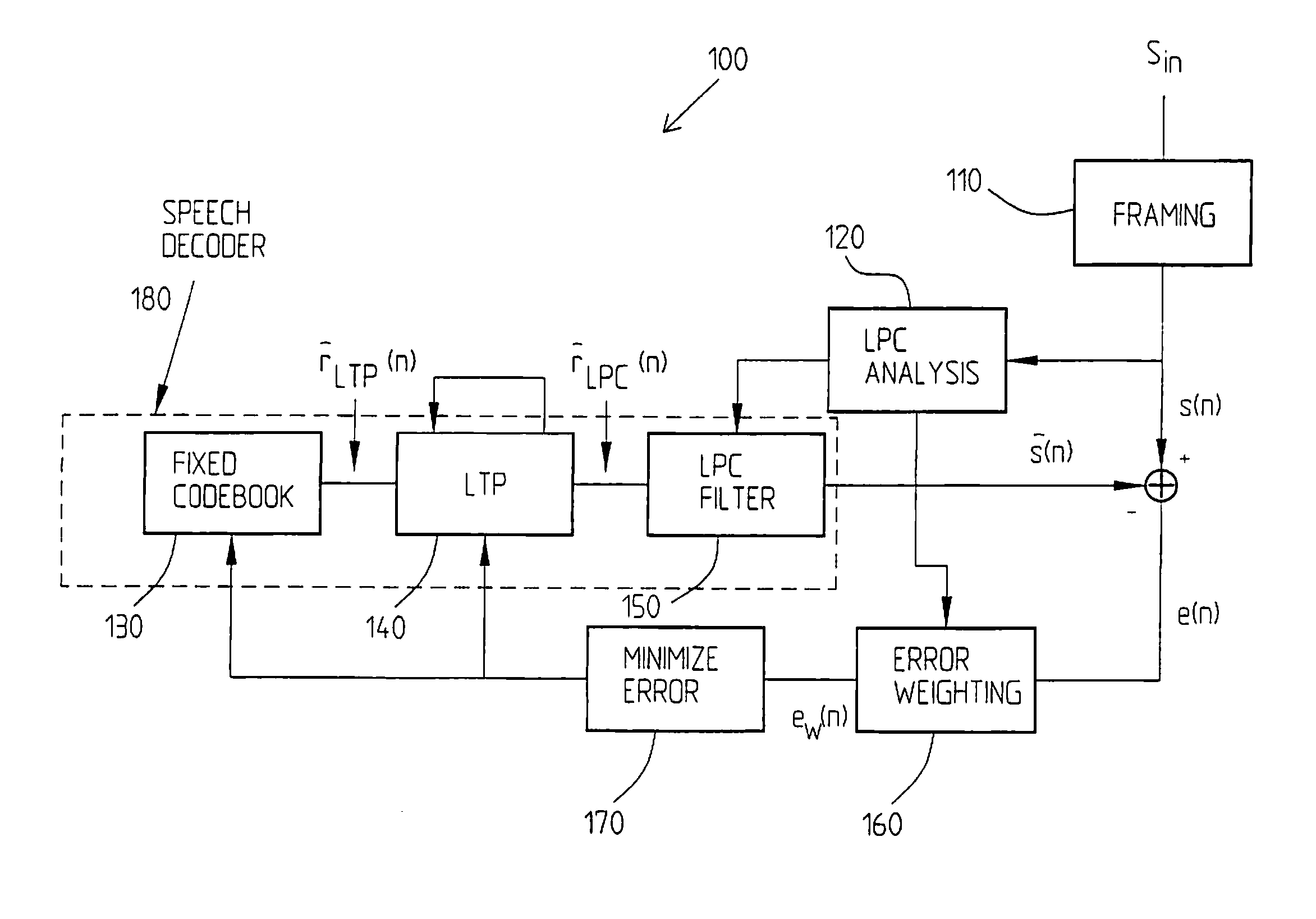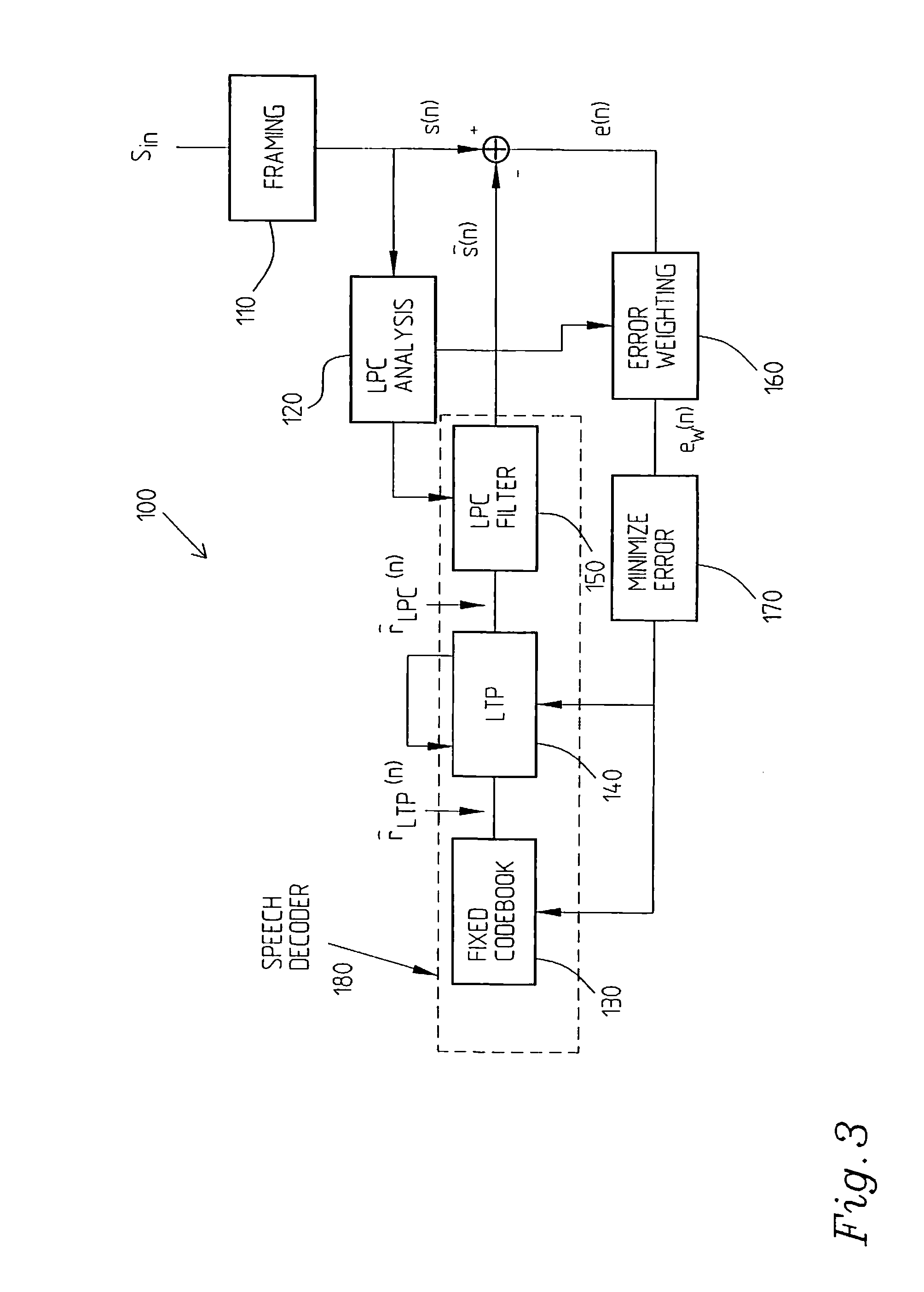Method of dynamically adapting the size of a jitter buffer
a buffer and jitter technology, applied in the field of receiving systems, can solve the problems of packet loss, packet delay, and packet jitter often occurring, and achieve the effects of smoothing out delay variations, improving speech quality, and efficient handling of arrival time variations
- Summary
- Abstract
- Description
- Claims
- Application Information
AI Technical Summary
Benefits of technology
Problems solved by technology
Method used
Image
Examples
Embodiment Construction
[0039] The present invention provides a receiver system in a communication system supporting packet-based communication of speech and data (e.g., an IP-network). The receiver system includes a receiver, a speech decoder and a jitter buffer for handling delay variations in the reception of a speech signal consisting of packets containing frames with encoded speech. The present invention also provides a system for improving the handling of delay variations in a jitter buffer within the receiver system in a communication system supporting packet-based communication of speech and data. The present invention also provides a system for adapting the size of a jitter buffer in a receiver system a communication system supporting packet-based communication of speech and data.
[0040] While the making and using of various embodiments of the present invention are discussed in detail below, it should be appreciated that the present invention provides many applicable inventive concepts that can be...
PUM
 Login to View More
Login to View More Abstract
Description
Claims
Application Information
 Login to View More
Login to View More - R&D
- Intellectual Property
- Life Sciences
- Materials
- Tech Scout
- Unparalleled Data Quality
- Higher Quality Content
- 60% Fewer Hallucinations
Browse by: Latest US Patents, China's latest patents, Technical Efficacy Thesaurus, Application Domain, Technology Topic, Popular Technical Reports.
© 2025 PatSnap. All rights reserved.Legal|Privacy policy|Modern Slavery Act Transparency Statement|Sitemap|About US| Contact US: help@patsnap.com



